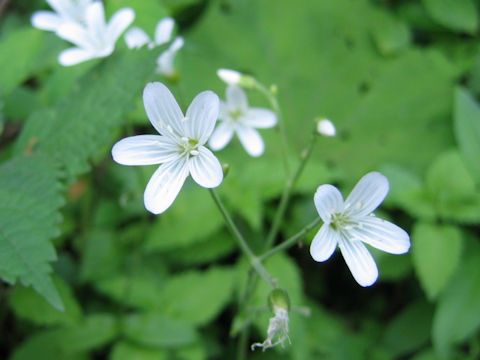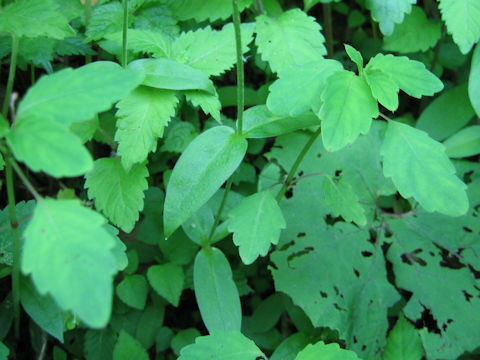
|
"Tagasode-so" (Cerastium pauciflorum var. amurense) belongs to Caryophyllaceae (the Carnation family). It is a perennial herb that is distributed to Chubu region of Honshu in Japan, the Korean Peninsula, northeastern China, Mongolia, Siberia, Eastern Europe, etc. It grows in slightly moist grasslands from low mountains to subalpine zones and can reach 30 to 50 cm in height. The stems are upright and the leaves are ovate-lanceolate to lanceolate. Soft hair grows on the stems and leaves. From May to June, white flowers come in the inflorescences at the tips of the stems. The feature is that the petals are large and there is no notch at the tip. The Japanese name comes from the poetry of the Kokin Wakashu (Collection of Japanese Poems of Ancient and Modern Times). "Japanese apricot seem to have a more scent than their colors. I wonder if someone's sleeves touch the Japanese apricot flowers in the inn and may take on a scent of them."
|





